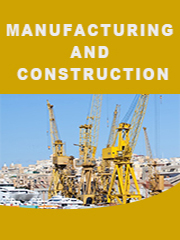Report overview
HVAC Pressure Sensor is one kind of sensor used in HVAC system.
HVAC pressure sensors allow technicians to easily monitor and adjust conditions to ensure the safety and comfort of the building's inhabitants.
This report aims to provide a comprehensive presentation of the global market for HVAC Pressure Sensors, with both quantitative and qualitative analysis, to help readers develop business/growth strategies, assess the market competitive situation, analyze their position in the current marketplace, and make informed business decisions regarding HVAC Pressure Sensors. This report contains market size and forecasts of HVAC Pressure Sensors in global, including the following market information:
Global HVAC Pressure Sensors Market Revenue, 2018-2023, 2024-2029, ($ millions)
Global HVAC Pressure Sensors Market Sales, 2018-2023, 2024-2029, (K Units)
Global top five HVAC Pressure Sensors companies in 2022 (%)
The global HVAC Pressure Sensors market was valued at US$ 383.8 million in 2022 and is projected to reach US$ 556.6 million by 2029, at a CAGR of 5.5% during the forecast period. The influence of COVID-19 and the Russia-Ukraine War were considered while estimating market sizes.
From perspective of type, HVAC Pressure Sensors can be split into Differential Pressure Sensors, Absolute Pressure Sensors, Gauge Pressure Sensors and Others. In 2019, Differential Pressure Sensors accounted for about 75% market share, which made it the largest segment of global HVAC Pressure Sensors.
Asia-Pacific is the largest consumption region of HVAC Pressure Sensors, with a consumption market share nearly 40% in 2019. The second place is North America; following Asia-Pacific with the consumption market share over 26% in 2019.
Key players of global HVAC Pressure Sensors market are Siemens, Schneider, Johnson Controls and Honeywell. Global giant manufactures mainly distributed in USA and Europe. The top 5 players totally took up a market share of about 55% in 2019. Siemens is in the first place, which accounted for above 16% of global market.
We surveyed the HVAC Pressure Sensors manufacturers, suppliers, distributors and industry experts on this industry, involving the sales, revenue, demand, price change, product type, recent development and plan, industry trends, drivers, challenges, obstacles, and potential risks.
Total Market by Segment:
Global HVAC Pressure Sensors Market, by Type, 2018-2023, 2024-2029 ($ Millions) & (K Units)
Global HVAC Pressure Sensors Market Segment Percentages, by Type, 2022 (%)
Differential Pressure Sensors
Absolute Pressure Sensors
Gauge Pressure Sensors
Global HVAC Pressure Sensors Market, by Application, 2018-2023, 2024-2029 ($ Millions) & (K Units)
Global HVAC Pressure Sensors Market Segment Percentages, by Application, 2022 (%)
Commercial
Residential
Industrial
Utilities and Government
Global HVAC Pressure Sensors Market, By Region and Country, 2018-2023, 2024-2029 ($ Millions) & (K Units)
Global HVAC Pressure Sensors Market Segment Percentages, By Region and Country, 2022 (%)
North America
US
Canada
Mexico
Europe
Germany
France
U.K.
Italy
Russia
Nordic Countries
Benelux
Rest of Europe
Asia
China
Japan
South Korea
Southeast Asia
India
Rest of Asia
South America
Brazil
Argentina
Rest of South America
Middle East & Africa
Turkey
Israel
Saudi Arabia
UAE
Rest of Middle East & Africa
Competitor Analysis
The report also provides analysis of leading market participants including:
Key companies HVAC Pressure Sensors revenues in global market, 2018-2023 (Estimated), ($ millions)
Key companies HVAC Pressure Sensors revenues share in global market, 2022 (%)
Key companies HVAC Pressure Sensors sales in global market, 2018-2023 (Estimated), (K Units)
Key companies HVAC Pressure Sensors sales share in global market, 2022 (%)
Further, the report presents profiles of competitors in the market, key players include:
Siemens
Schneider
Honeywell
Johnson Controls
SSI Technologies (Amphenol)
Sensata Technologies
Danfoss Electronics
Emerson Electric
Sensirion
Setra Systems, Inc.
BAPI
Greystone Energy Systems
Cleveland Controls
MAMAC Systems
E+E Elektronik Ges.m.b.H
Outline of Major Chapters:
Chapter 1: Introduces the definition of HVAC Pressure Sensors, market overview.
Chapter 2: Global HVAC Pressure Sensors market size in revenue and volume.
Chapter 3: Detailed analysis of HVAC Pressure Sensors manufacturers competitive landscape, price, sales and revenue market share, latest development plan, merger, and acquisition information, etc.
Chapter 4: Provides the analysis of various market segments by type, covering the market size and development potential of each market segment, to help readers find the blue ocean market in different market segments.
Chapter 5: Provides the analysis of various market segments by application, covering the market size and development potential of each market segment, to help readers find the blue ocean market in different downstream markets.
Chapter 6: Sales of HVAC Pressure Sensors in regional level and country level. It provides a quantitative analysis of the market size and development potential of each region and its main countries and introduces the market development, future development prospects, market space of each country in the world.
Chapter 7: Provides profiles of key players, introducing the basic situation of the main companies in the market in detail, including product sales, revenue, price, gross margin, product introduction, recent development, etc.
Chapter 8: Global HVAC Pressure Sensors capacity by region & country.
Chapter 9: Introduces the market dynamics, latest developments of the market, the driving factors and restrictive factors of the market, the challenges and risks faced by manufacturers in the industry, and the analysis of relevant policies in the industry.
Chapter 10: Analysis of industrial chain, including the upstream and downstream of the industry.
Chapter 11: The main points and conclusions of the report.
